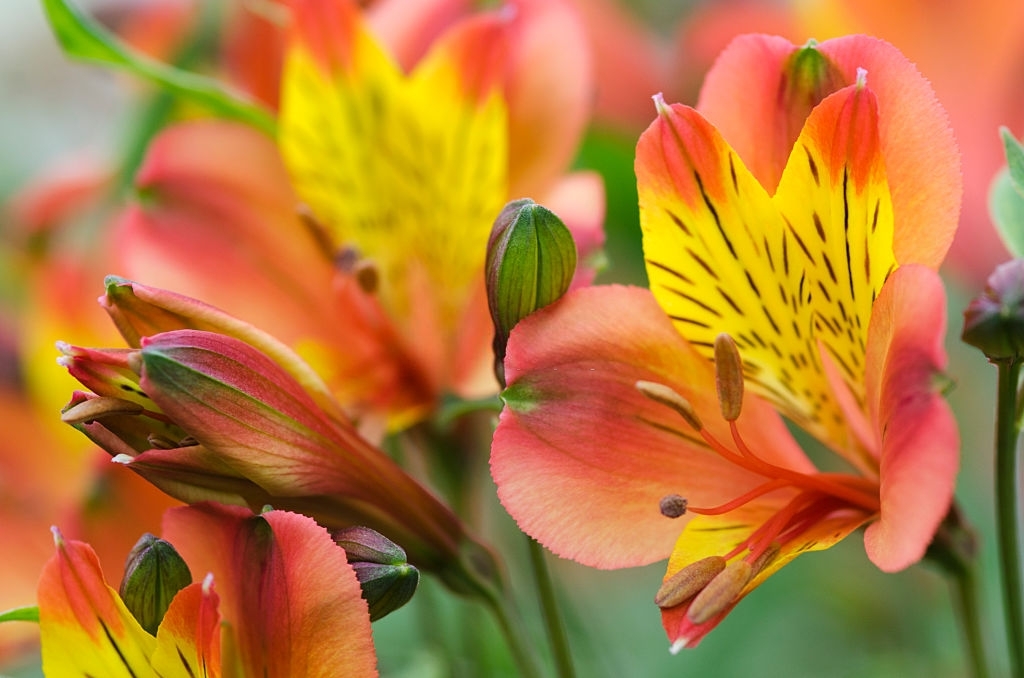
Alstroemeria is a Peruvian lily or Inca lily native to South America. This perennial plant is highly valued for its unusual beauty flowers, which retain their attractiveness for a very long time when cut. That is why the cultivation of alstroemeria is widely used on an industrial scale – in a greenhouse, and a flower can be distilled twice a year.
Alstroemeria is an excellent opportunity to add exotic to your garden. It is pretty high (in some varieties, the flower stalks reach 80 to 150 cm in height), the flowers are collected in racemose inflorescences. When alstroemeria blooms, it seems that a flock of exotic butterflies has descended on the flower bed. Alstroemeria flowers very much resemble lilies, only smaller – the largest ones reach only 6 cm in diameter. The color of flowers is very diverse: pink, yellow, red, pale lilac, almost always – with specks on the petals. Another characteristic feature of the alstroemeria petals is the longitudinal dark lines, which shorten and become thinner closer to the center of the flower.
In the language of flowers, a bouquet of alstroemeria is a gentle but unobtrusive compliment – “You are so cute” or “You are the most charming” with wishes of good luck, prosperity, wealth, and friendship. Alstroemeria is odorless flowers, so they are perfect for people prone to allergies.
Alstroemeria in Landscape Design
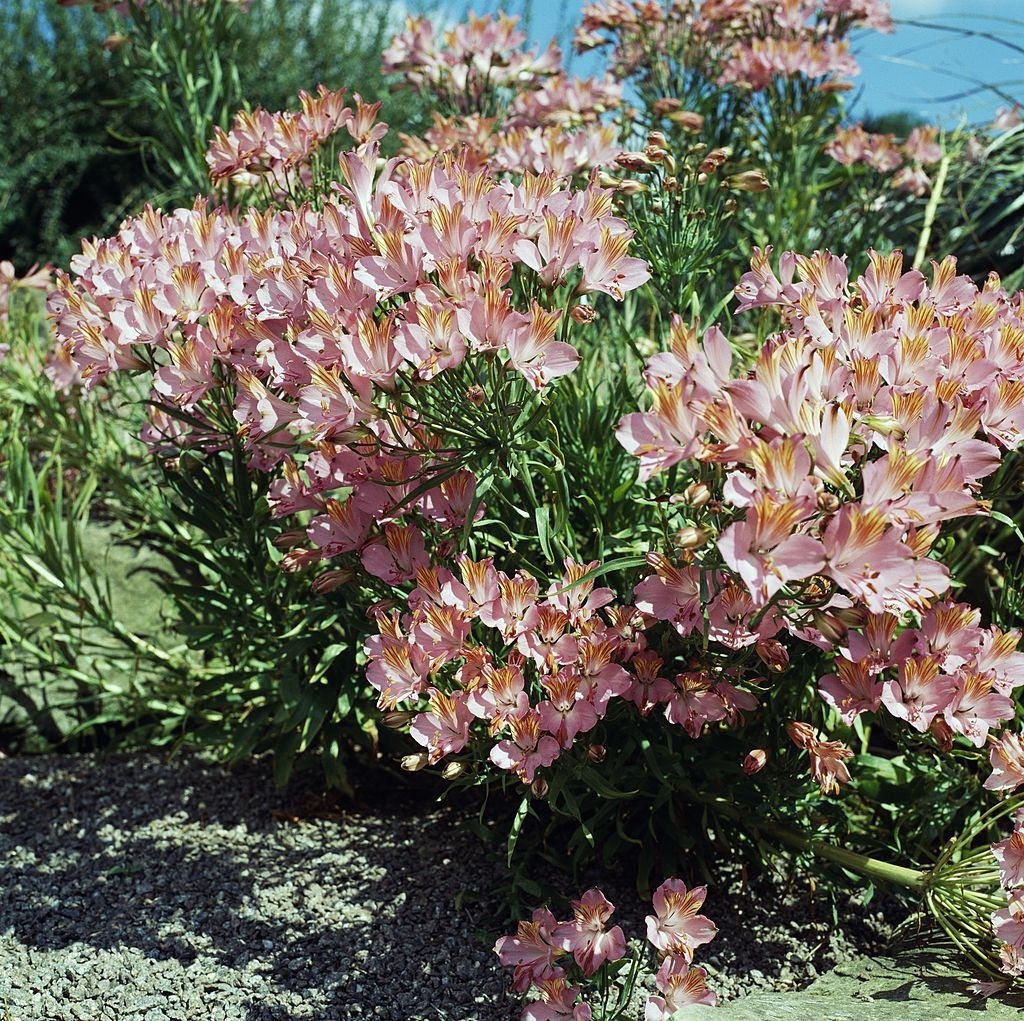
In landscape design, a rose is often selected in a pair of alstroemeria, as if playing on the opposites of colors – the tenderness and fragility of the Peruvian lily favorably set off the charm and power of the studded beauty. That is why most often, alstroemeria acts as a background for roses.
The combination of alstroemeria with chrysanthemums will look bright and tender. There can be two approaches – to plant together chrysanthemums and alstroemeria of delicate tones combined in color. Or vice versa, pastel colors of some colors will be a winning background for bright inflorescences of others. Another successful combination is with gerberas. Such a union will look very decorative, while you can use the widest palette – pink, orange, and red shades. Purple and blue irises will look good next to alstroemeria; small roses and lilies can be added to this composition.
Alstroemeria looks great as a tapeworm in group plantings and flower beds, while undersized plants, such as tenacious or stonecrop, are selected as companions for it.
There are a large number of varieties and types of alstroemeria, but the following are best adapted to our conditions:
- Golden – a variety originally from Chile, shoots up to 90 cm in height, flowers – bright orange color. The cultivar is famous for the fact that its flowers are often used to create hair ornaments.
- Virginia is a variety with high, up to 70 cm, strong large shoots, on which large white flowers bloom. Flowering begins in June and can last until the first November frost.
- Alicia is a beautiful bicolor flower, and its petals are pink and white.
- Lemon – a variety with a huge flower of spectacular, bright lemon color, with a slight greenish tinge.
- Brazilian lily – very tall. Shoots can be up to 2 m tall.
- Blood-flowered – a variety that attracts large (up to 15 flowers) lush inflorescences.
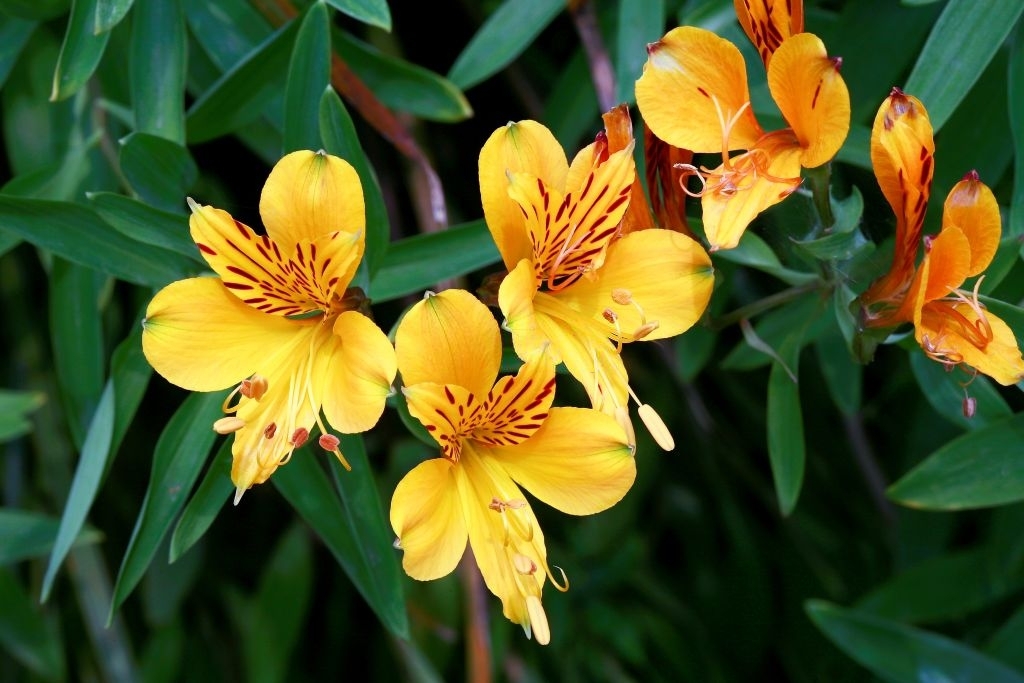
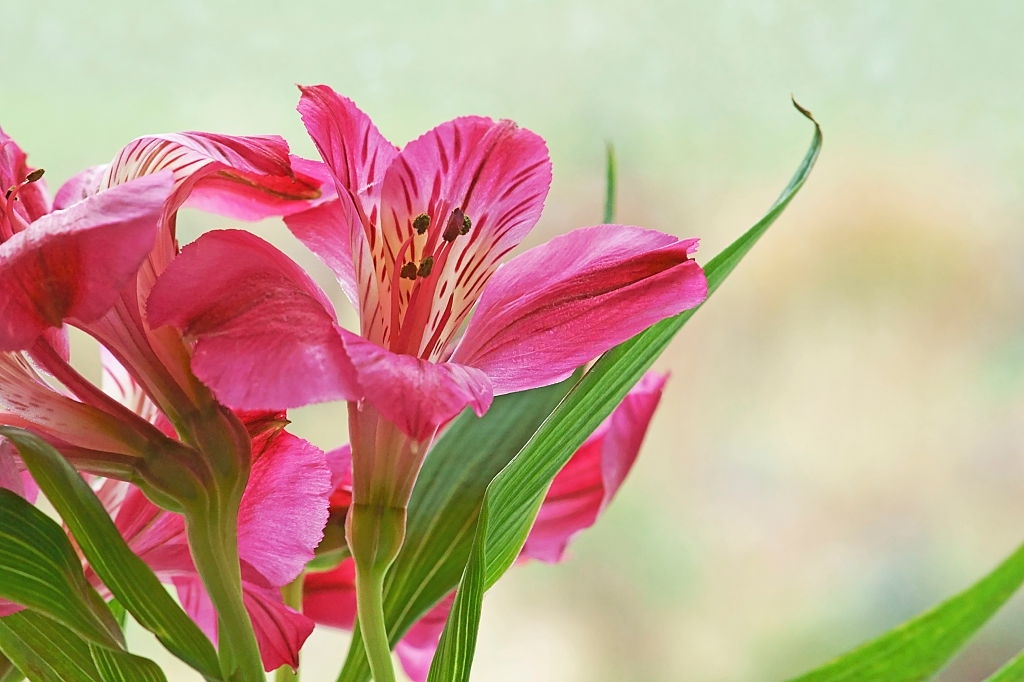
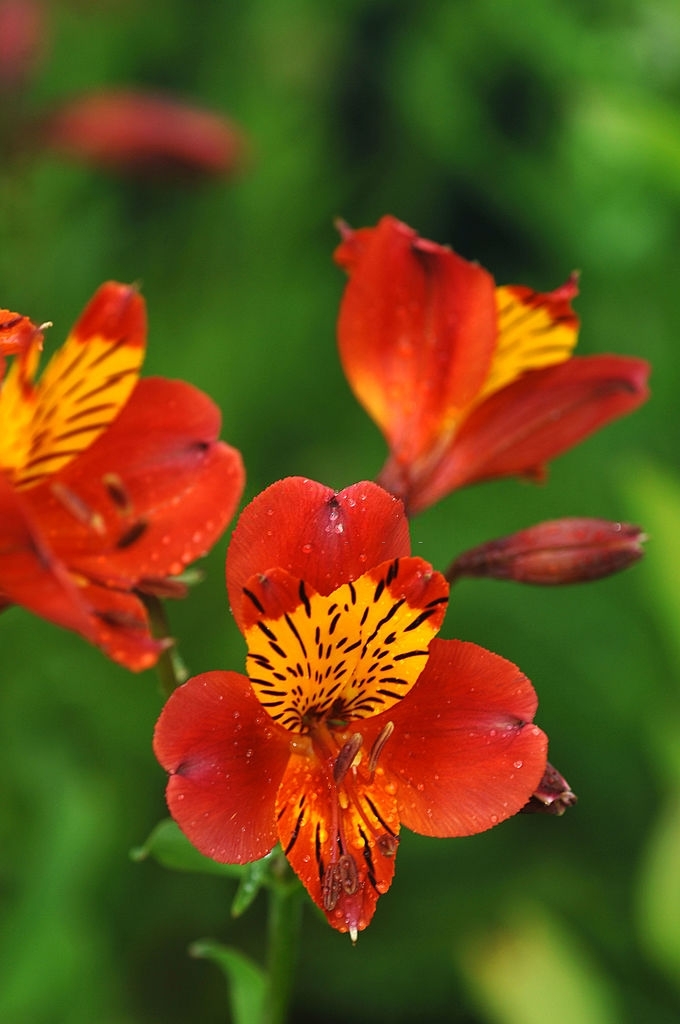
Growing, Planting, Caring for Alstroemeria: Basic Recommendations
Alstroemeria cannot be called very capricious and demanding in care, but several points must be considered to admire the flowering.
Seat Selection
Whether the alstroemeria will bloom at all depends on how correctly the landing site is chosen. The place should be bright, but not very sunny, with light, well-drained soil. On heavy soils, the flower feels very uncomfortable, develops poorly, and practically does not bloom. In this case, the soil must be prepared by adding a baking powder to it – high peat, leaf compost, or rotted manure. The optimal acidity index is pH 5.5-6.5, but if the pH exceeds 7, it is recommended to use phosphoric acid for fertilization.
Advice! It is crucial to protect the roots of alstroemeria from overheating. As soon as the soil temperature exceeds 22-23 degrees, the root system (tubers) begins to develop very intensively, which happens to the detriment of flowering. To prevent this, the soil around the roots is mulched.
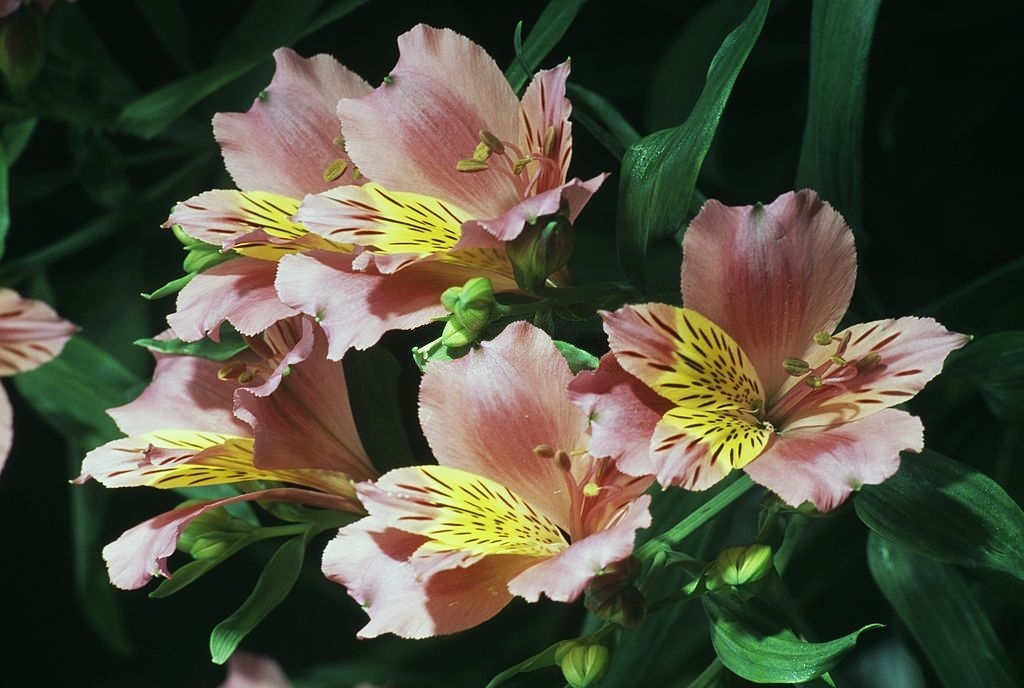
Wintering
Most varieties of alstroemeria are very thermophilic (although hybrids have already been bred that can withstand frosts down to -25 ° C), so they must be covered for the winter. With the onset of autumn, the plant ceases to be watered. Before the onset of the first frost, the aboveground part is cut off, and the place itself is covered with spruce branches, dry leaves, or straw, then everything is covered with plastic wrap, on which a layer of earth, straw, or mulch is again poured. All this should protect the ground from freezing. The older the plant, the better it tolerates frost. In the southern regions, alstroemeria can also winter outdoors.
Advice! In the northern regions, it is preferable to dig up tubers. First, so that the roots do not rot during storage, the earthen lump is slightly dried. Then, they are stored similarly to dahlia tubers – in the basement (cellar) at positive temperatures.
Watering
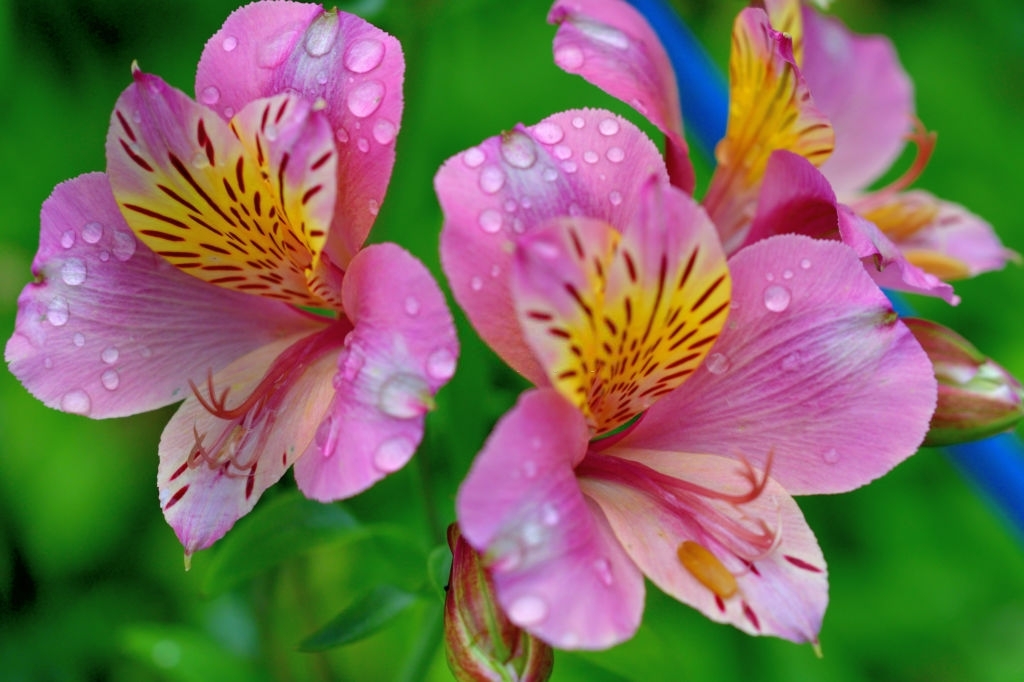
Alstroemeria loves moisture, the soil should not dry out, but at the same time, the flower does not tolerate waterlogging of the soil. From this, its roots easily rot. Therefore, it is often watered but moderately, and to maintain moisture, the soil around the plant is loosened and mulched (leaf compost, sawdust, peat).
Pruning
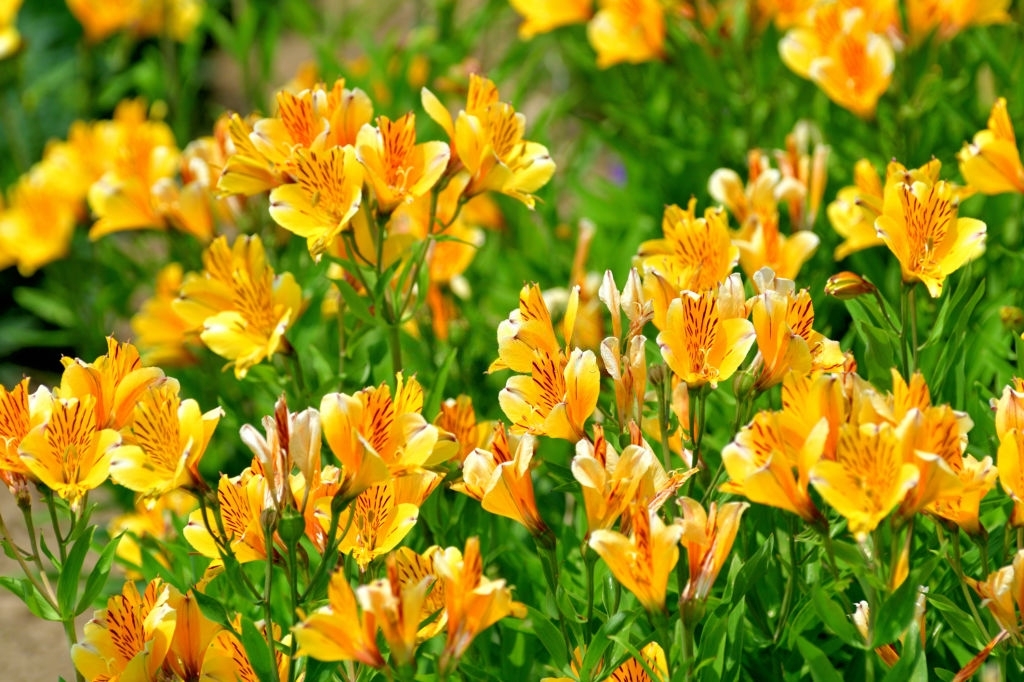
If the plant is not cut, then from 80 to 130 buds can appear on it. However, they will be minimal. In the spring, after the first shoots appear, the plant requires thinning – only the strongest branches are left, cutting off about a third of the shoots. In the future, dried leaves and wilted flowers are removed, old stems are also cut off, leaving about 10-15 cm of shoot from the root. Such pruning not only improves the appearance of alstroemeria but also acts as a prevention of possible diseases.
Advice! The stems of a young plant are very fragile. Therefore, they will need to be supported to not break in the rain or the wind.
Topdressing
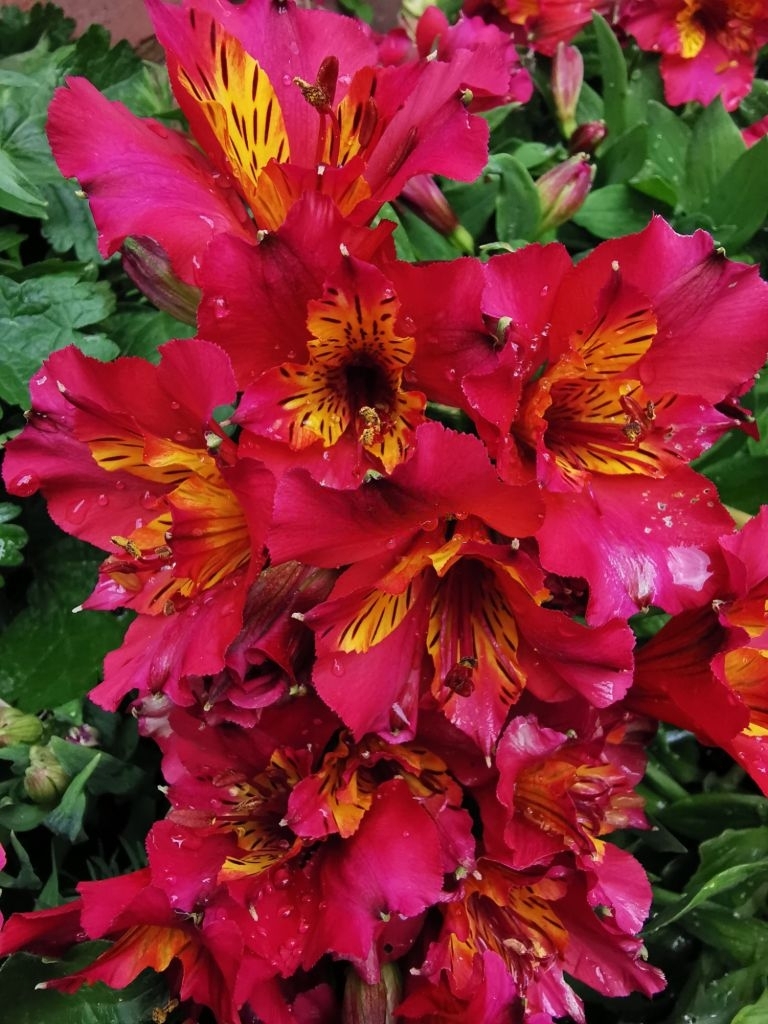
For normal flowering of alstroemeria, it must be fed 3-4 times a month. Before the beginning of flowering (the appearance of buds), a complete mineral fertilizer with an increased potassium content is applied. From the moment of budding and until the end of flowering, fertilizers are applied (select those recommended for flowering plants) with minimum nitrogen content. Organic matter (mullein, bird droppings) can also be used as a top dressing, but in small quantities, well-rotted, and low concentration.
Diseases and Pests
Despite its rather fragile appearance, alstroemeria is quite resistant to pests and diseases. First of all, the moisture regime will require attention. If the soil drainage is insufficient or the air is humid (for example, close to a body of water), then alstroemeria is often affected by botrytis (gray rot). Therefore, after long, lingering rains, the rhizomes and the entire plant must be treated with a foundational (or its other analog fungicide) solution. Re-processing is carried out after 2-3 weeks.
The main pests affecting alstroemeria are thrips, slugs, spider mites, leaf-eating beetles, and caterpillars. For the prevention and control of them, such drugs as ektara, Castelli, fit over, karbofos, and others are effective.
Reproduction of Alstroemeria
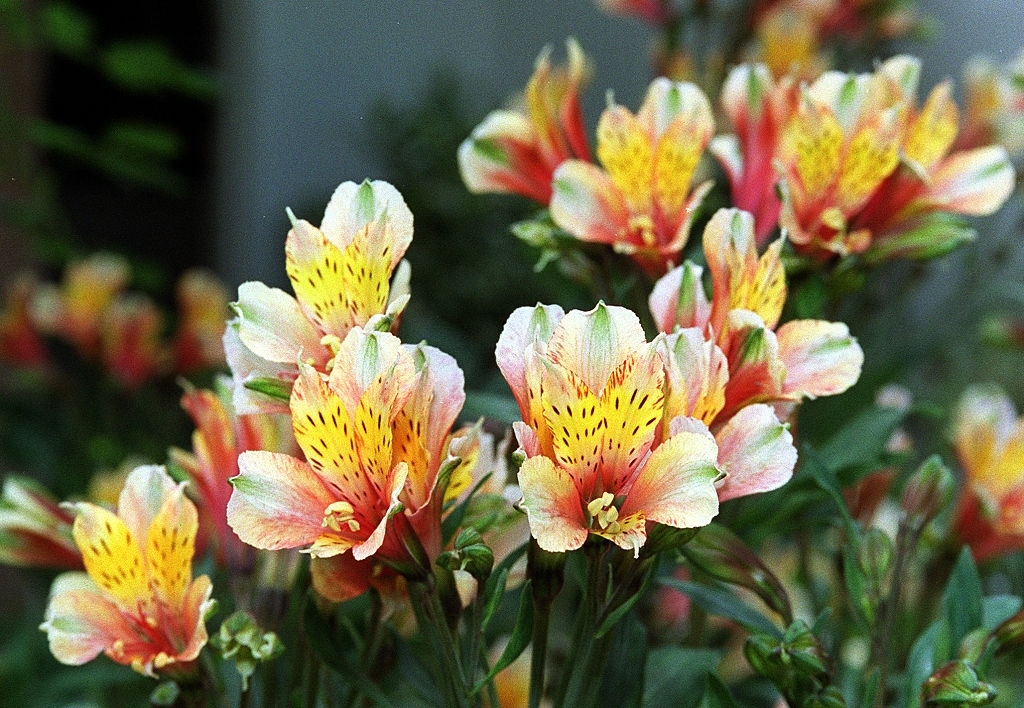
Reproduction of alstroemeria can be carried out both by seeds and by dividing rhizomes. When growing a flower from seeds, flowering will occur only in the third year. Alstroemeria seeds are planted on seedlings in February-March, having prepared the composition of the soil from 1 part of sod and 2 parts of leafy soil. The seeds are sown on the ground, and, slightly pressed, they are liberally sprinkled with soil. The container with seeds is placed in a plastic bag and sent for stratification, which is carried out at a temperature of 2-5 ° C for a month, after which the container is transferred to a warm place – about 20 ° C. Exposure to low temperatures leads to the emergence of seedlings in 10-20 days (but some seeds may germinate much later). Seedlings are planted in the ground in late May-early June when the threat of night frosts will disappear completely.
It is preferable to carry out the reproduction of alstroemeria by dividing the rhizome – if you plant it in the fall, you can get flowering in the spring. The rhizomes of adult (about 3 years old) plants are divided, while at least 5 buds should remain in each division. In addition, it helps to rejuvenate plants and streamline their growth. For example, parrot alstroemeria grows very quickly and can literally “squeeze out” neighbors in a few years. Before planting, a small amount of organic fertilizers is introduced into the hole. After planting, the soil is mulched.






